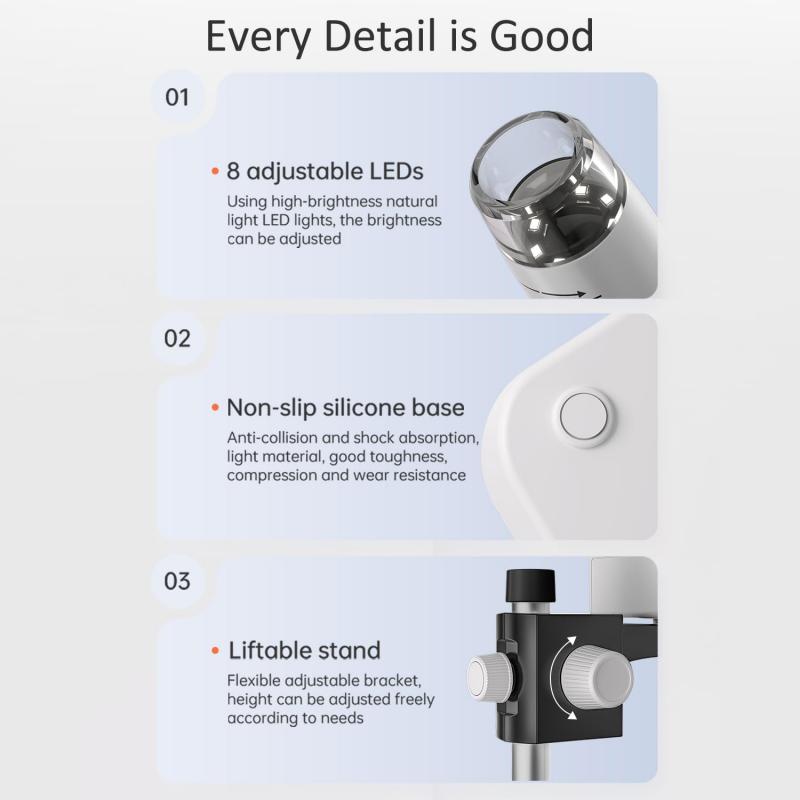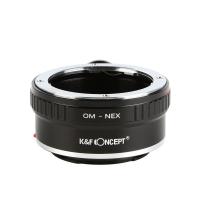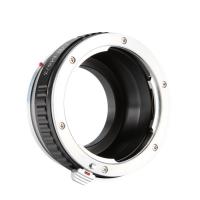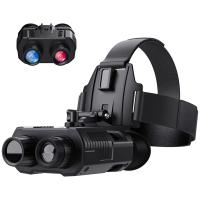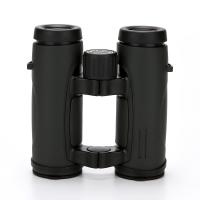How To Determine Magnification Of Microscope ?
The magnification of a microscope can be determined by multiplying the magnification of the objective lens by the magnification of the eyepiece lens. The magnification of the objective lens is usually printed on the lens itself, while the magnification of the eyepiece lens is typically 10x. For example, if the objective lens has a magnification of 40x and the eyepiece lens has a magnification of 10x, the total magnification of the microscope would be 400x (40 x 10 = 400). It is important to note that the total magnification of a microscope is limited by the resolving power of the lenses and the wavelength of light used to illuminate the specimen.
1、 Total magnification formula
How to determine magnification of microscope:
To determine the magnification of a microscope, you need to know the magnification of the objective lens and the eyepiece. The magnification of the objective lens is usually printed on the lens itself, while the magnification of the eyepiece is usually 10x. To determine the total magnification, simply multiply the magnification of the objective lens by the magnification of the eyepiece.
Total magnification formula:
Total magnification = magnification of objective lens x magnification of eyepiece
For example, if the objective lens has a magnification of 40x and the eyepiece has a magnification of 10x, the total magnification would be 400x.
It is important to note that the total magnification is not the same as the resolution of the microscope. Resolution refers to the ability of the microscope to distinguish between two closely spaced objects. The resolution of a microscope depends on several factors, including the wavelength of light used and the numerical aperture of the objective lens.
In recent years, there has been a growing interest in using digital microscopes, which use a camera to capture images instead of an eyepiece. In these microscopes, the magnification is determined by the size of the camera sensor and the distance between the lens and the sensor. The total magnification can be calculated using a similar formula, but the magnification of the eyepiece is replaced by the magnification of the camera.

2、 Eyepiece and objective lens magnification
How to determine magnification of microscope:
To determine the magnification of a microscope, you need to know the magnification of both the eyepiece and the objective lens. The magnification of the eyepiece is usually printed on the side of the lens, while the magnification of the objective lens is determined by the length of the tube and the focal length of the lens.
To calculate the total magnification of the microscope, you simply multiply the magnification of the eyepiece by the magnification of the objective lens. For example, if the eyepiece has a magnification of 10x and the objective lens has a magnification of 40x, the total magnification of the microscope would be 400x.
It is important to note that the magnification of a microscope does not necessarily determine the quality of the image. Other factors such as resolution, contrast, and depth of field also play a role in the clarity of the image.
Eyepiece and objective lens magnification:
The eyepiece and objective lens are two important components of a microscope that determine the magnification and clarity of the image. The eyepiece is the lens that you look through, while the objective lens is the lens that is closest to the specimen.
The magnification of the eyepiece is usually fixed, while the magnification of the objective lens can be changed by rotating the nosepiece to switch between different lenses. Higher magnification objective lenses allow for a closer view of the specimen, but may also result in a narrower field of view and a shallower depth of field.
Recent advancements in microscope technology have led to the development of digital microscopes, which use a camera to capture images of the specimen and display them on a computer screen. These microscopes often have software that allows for image processing and analysis, making them useful tools in fields such as biology, medicine, and materials science.
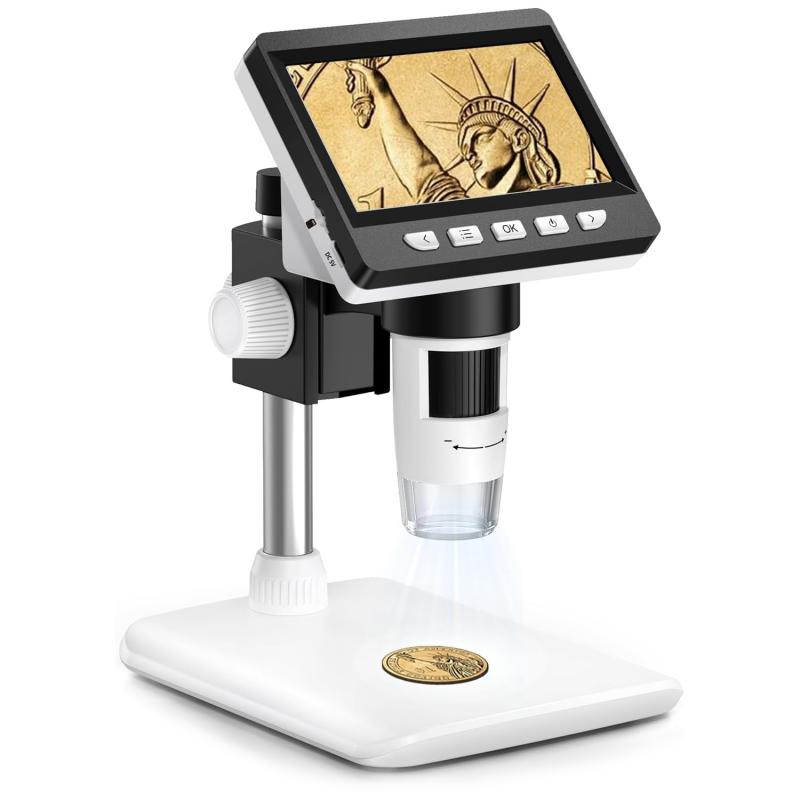
3、 Measuring the field of view
How to determine magnification of microscope:
To determine the magnification of a microscope, you need to know the magnification of the objective lens and the eyepiece. The magnification of the objective lens is usually printed on the lens itself, while the magnification of the eyepiece is usually 10x. To calculate the total magnification, simply multiply the magnification of the objective lens by the magnification of the eyepiece.
For example, if the objective lens has a magnification of 40x and the eyepiece has a magnification of 10x, the total magnification would be 400x.
It is important to note that the magnification of a microscope does not necessarily determine the quality of the image. Other factors such as resolution, contrast, and depth of field also play a role in the quality of the image.
Measuring the field of view:
Another way to determine the magnification of a microscope is by measuring the field of view. The field of view is the area visible through the microscope when looking through the eyepiece. To measure the field of view, place a ruler or a stage micrometer on the stage of the microscope and focus on it using the lowest magnification objective lens.
Measure the diameter of the field of view in millimeters using the ruler or stage micrometer. Then, switch to a higher magnification objective lens and measure the diameter of the field of view again. Divide the diameter of the field of view at the higher magnification by the diameter of the field of view at the lower magnification to determine the magnification.
It is important to note that the field of view may vary depending on the microscope and the objective lens used. Therefore, it is recommended to calibrate the microscope before using it for accurate measurements.

4、 Calculating the size of the specimen
How to determine magnification of microscope:
To determine the magnification of a microscope, you need to know the magnification of the objective lens and the eyepiece. The magnification of the objective lens is usually printed on the lens itself, while the magnification of the eyepiece is usually 10x. To determine the total magnification, simply multiply the magnification of the objective lens by the magnification of the eyepiece.
For example, if the objective lens has a magnification of 40x and the eyepiece has a magnification of 10x, the total magnification would be 400x.
Calculating the size of the specimen:
To calculate the size of a specimen viewed under a microscope, you need to know the magnification of the microscope and the size of the field of view. The field of view is the area visible through the microscope.
To calculate the size of the specimen, you can use the following formula:
Size of specimen = (size of field of view / number of specimens) x magnification
For example, if the size of the field of view is 2mm and there are 10 specimens visible, and the magnification is 400x, the size of each specimen would be:
Size of specimen = (2mm / 10) x 400 = 80 micrometers
It is important to note that the size of the specimen may vary depending on the orientation and position of the specimen on the slide. Additionally, the use of digital microscopes and image analysis software can provide more accurate measurements of specimen size.
